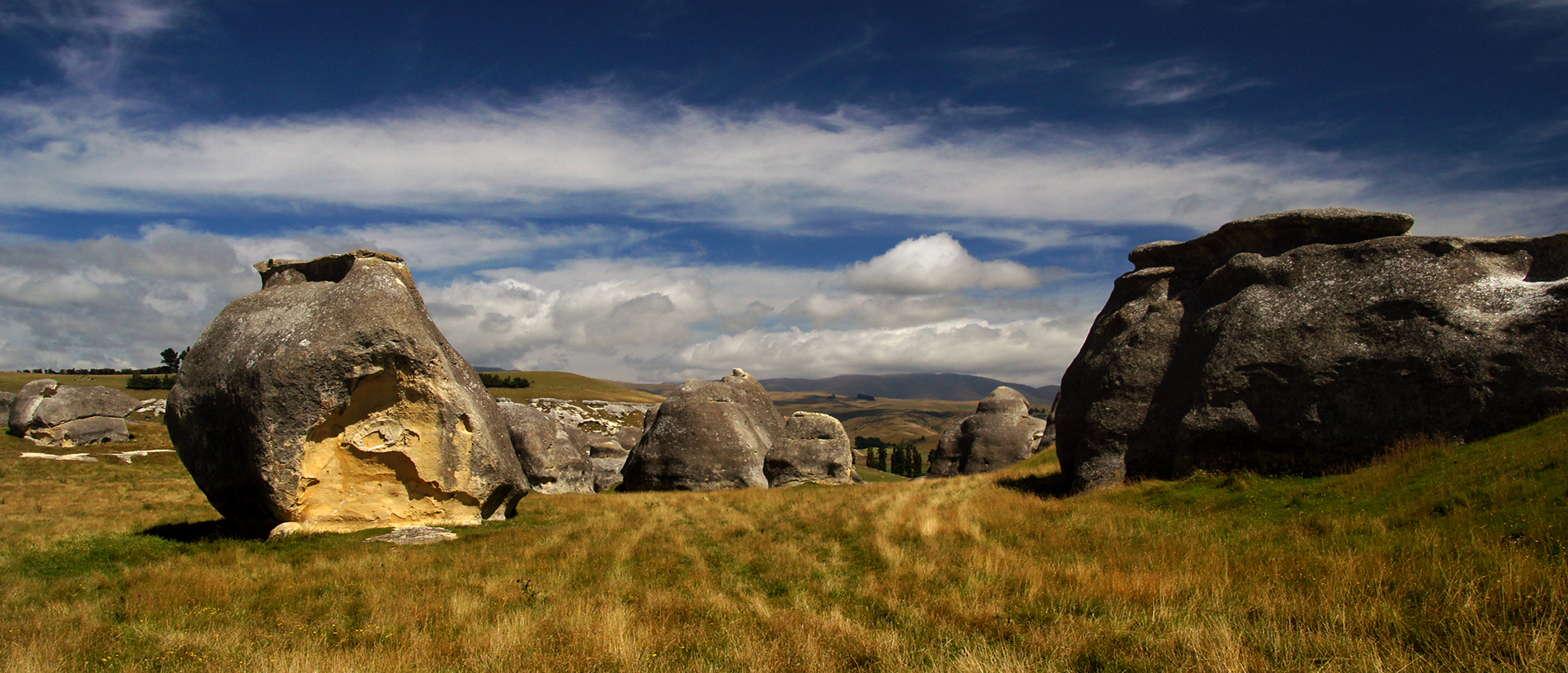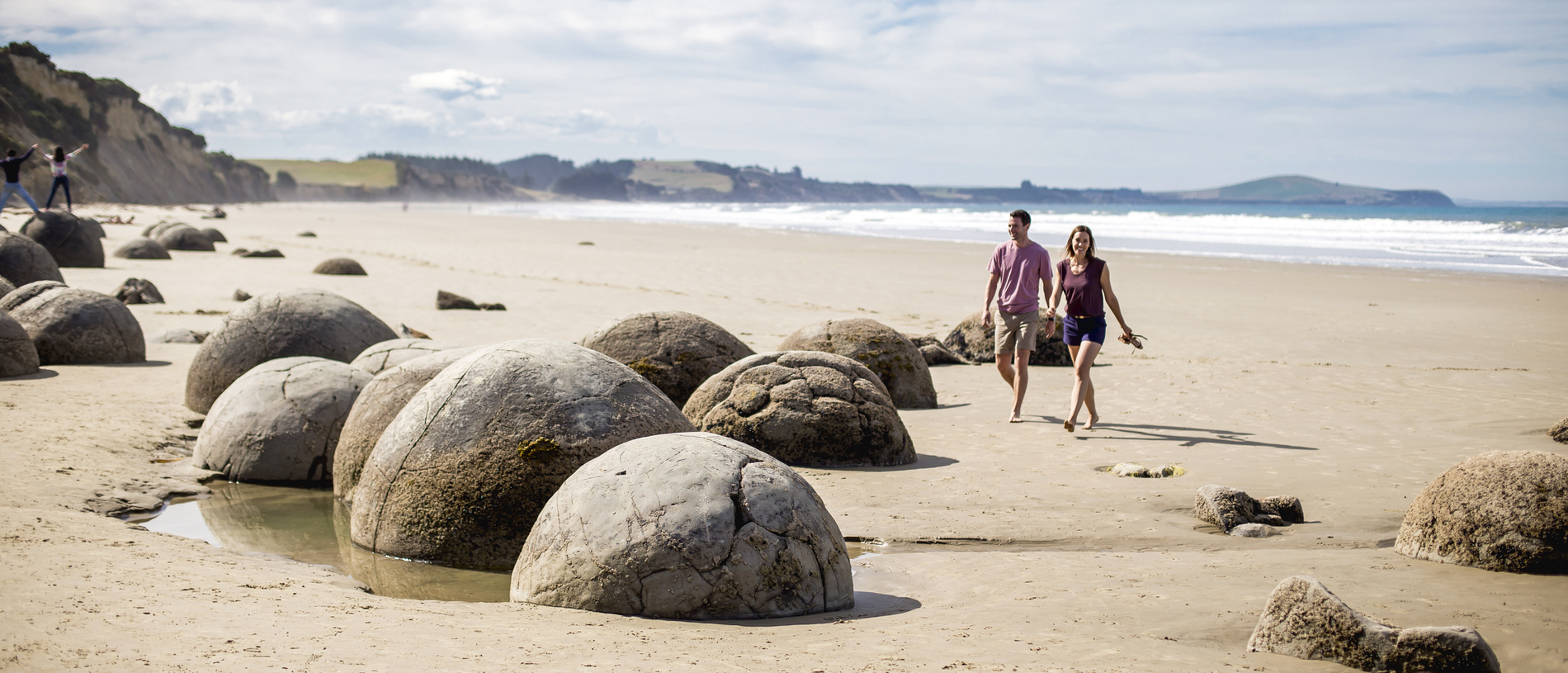
Loved by the locals: Waitaki
Do what the locals do in Waitaki.

They just don’t look natural...
Just south of Ōamaru, you’ve got this nice, sandy beach, but at a certain point there’s a collection of perfectly round boulders, some smooth-skinned and perfect, others fracturing along buttery veins of quartz, others eroded away to little more than a pile of quartzy rubble.
The mystic appearance of the Moeraki boulders has drawn dreamers, artists, conspiracy theorists, crackpots and eccentrics for decades (and many of these have settled at the nearby clutch of baches and cribs).
It’s a sleepy little place – which is, in fact, not far removed from the Māori name for it. You don’t really need a bunch of round rocks to make this a spot worth visiting.
Plenty of explanations for the boulders have been advanced down the years. The local Māori tradition has it that the boulders are the flotsam cast from the wreck of the voyaging canoe Arai-te-uru, which came to grief on her way south in search of greenstone. A long, low reef at Shag Point, some 20km south of the boulder site is said to be the wreck of the waka herself, and a nearby vertical rock formation the transfixed body of her commander.
They could, of course, be the marbles of the gods. Or dinosaur eggs. Or something to do with aliens – after all, we all know alien artefacts when we see them.
The most entertaining theory of them all is that they are ballast stones once carried in the bilges of a great fleet of Chinese junks that discovered the world, including New Zealand, in the fifteenth century.
The least entertaining explanation, on the other hand, is the one dreamed up by scientists.
They’d have us believe that what we’re looking at is a bunch of septarian concretions, which formed on the stony sea floor some 60 million years ago. A piece of organic material, such as a dead animal, or a lump of dinosaur dung, or a bunch of plant matter, lies in the silt on the seafloor and forms a focal point for cementing minerals, which gradually build up into, in this case, a sphere.
That’s the concretion part. In septarian concretions, cracks in the sphere are invaded by other minerals – calcite at Moeraki. Long after the sea retreated, the boffins say, the concretions lay about embedded in the mudstone, gradually emerging as the mudstone matrix eroded.
All of which just goes to show that when you boil it down, scientists are a bunch of killjoys.